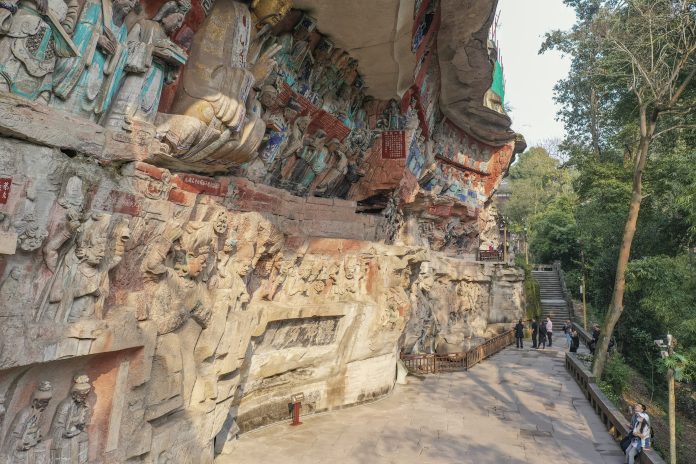The first International Forum on Cave Temple Conservation, centered around the theme of “Cave Temple Conservation in the Context of Climate Change,” was launched in Chongqing Municipality on August 19. The event took place in the Baoding Mountains, where carvings from the Southern Song Dynasty (1127-1279) form a crucial part of the Dazu Rock Carvings World Cultural Heritage Site, designated as a UNESCO World Cultural Heritage Site in 1999.
Recently, a rise in extreme weather events attributed to climate change has begun affecting these ancient carvings, primarily through increased humidity and wind erosion.
This issue has sparked discussions among scholars and experts from various countries, including Germany, Pakistan, and Italy, on the preservation of cave temples and the mitigation of climate change impacts through international collaboration.
Within this context, a significant step was taken with the signing of a Memorandum of Understanding (MoU) between two institutions: the Academy of Dazu Rock Carvings and the Museum of the Government of Khyber Pakhtunkhwa Peshawar. The MoU aims to establish friendly relations and cooperation.
Dr. Abdul Samad, Director-General of Directorate of Archaeology & Museums, Government of Khyber Pakhtunkhwa Peshawar, who represented Pakistan during the signing, highlighted the importance of the MoU for both China and Pakistan.
He emphasized the shared challenges in cultural relics protection faced by the two countries and stressed the need for practical collaboration beyond just formal agreements.
The Dazu Rock Carvings comprise over 50,000 stone statues across 74 sites, mostly found on cliffs and within mountains.
Factors like geology and climate make the preservation of these cultural relics a global challenge. Water erosion due to the high humidity environment in Chongqing poses a significant threat to the carvings.
To counter this, protection measures like the Stone Cultural Relics Protection Research Center and the Dazu Rock Carvings Cultural Relics Hospital have been established.Under the terms of the Memorandum of Understanding, the two parties involved will exchange knowledge and technology, jointly promote cultural protection, and ensure the inheritance and prosperity of cultural heritage, as noted by Jiang Siwei, Director of the Dazu Rock Carvings Research Institute.


